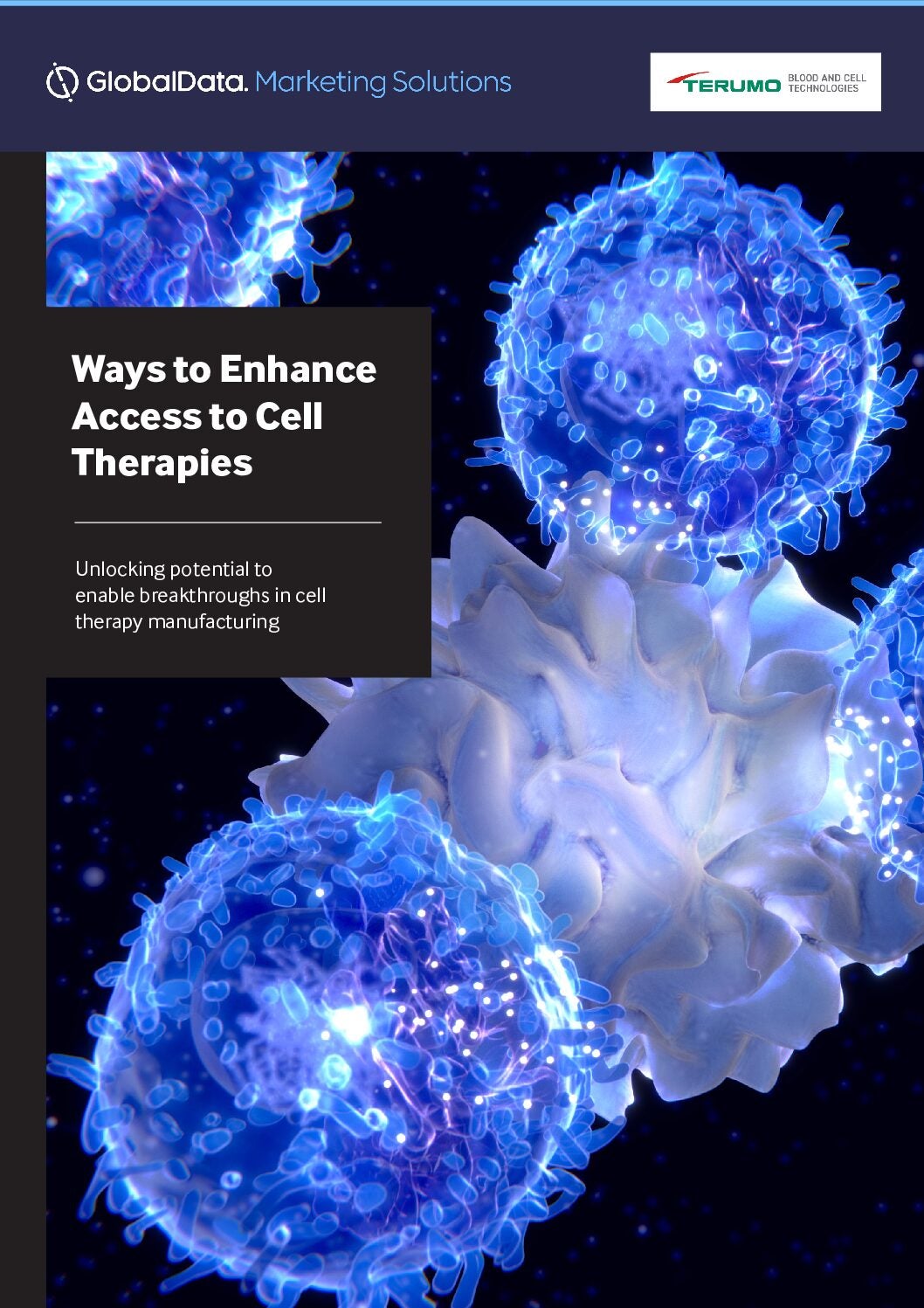
By 2029, the global cell and gene therapy market is projected to be worth more than $81bn, according to GlobalData’s Sales and Forecast Database.1 Oncology is predicted to be the dominant indication, accounting for 44% of the total market.1
New treatment modalities for incurable diseases are becoming a reality. Furthermore, there is an expectation that these treatments will one day be first-line therapies, having progressed since their introduction up to as high as second-line options. This means that patients will have access to curative treatments sooner, without the need for repeated dosing of older, potentially less effective therapies.
Yet for all the promise of cell and gene therapies, the field has been beset by complexities and high costs. For this field to advance, the economics, science, technology, and regulations must all progress together. If either one of these areas falls behind, it will lead to delays in regulatory approvals and failures to meet the treatment needs of patients.
“Regulations have to keep pace with the industry and the technology, and that’s a big challenge with the field,” explains Stuart Gibb, PhD, Scientific Strategy Lead at Terumo Blood and Cell Technologies.
Nevertheless, considerable efforts are being applied to turn potential into reality in this transformational area of medical science.
How oncology leads in cell and gene therapy
Oncology, an area with high unmet medical needs, has received a lot of attention for the development of new treatment options. These endeavors have been integral in advancing the understanding and application of cell and gene therapies. Adoptive cell transfer, the infusion of immune cells — in this case, modified immune cells — into patients is the core principle that has been used to equip patients’ immune systems with the capabilities to successfully fight and overcome an increasing variety of cancers.
Chimeric antigen receptor (CAR) T-cell therapies have led the way in terms of medical breakthroughs in oncology, with effective treatments available that target and eliminate specific types of blood cancer and leukemia. As of 2024, eight CAR T-cell therapies have been approved by the US Food and Drug Administration (FDA). Notably, many of these potentially curative treatments are now second-line therapies.
A significant milestone in a new modality — tumor-infiltrating lymphocytes (TILs) — was reached when the FDA approved the first-ever T-cell therapy for treating solid tumors with AMTAGVI from manufacturer Iovance Biotherapeutics.
Meanwhile, on the horizon, one highly promising phase 1 clinical trial in Pennsylvania is the first in the world to use CAR T cells to target two types of protein associated with the most aggressive type of malignant brain cancer.2 Initial reports suggest that this treatment could decrease the growth of solid tumors in the brain. A further study involving Mass General Cancer Center in the US is also using CAR T cells to treat brain tumors and found that the tumor in some patients had almost been eradicated within five days of treatment.
Advances in oncology will influence the development of therapeutics for additional conditions and disease areas. One area with considerable excitement around the use of T cells is in treating autoimmune diseases, with therapies effectively resetting the immune system.
“It really is all learnings from oncology,” adds Gibb. “We’re using our learnings from the CAR T-cell field to engineer other cells and see what we can do.”
However, treatment costs remain a significant barrier for patients. Historically, CAR T-cell treatments have been priced at around $500,000, with Iovance’s TIL therapy AMTAGVI following suit at $515,000.3 To address the issue of treatment costs, innovations are required for all modalities within oncology.
The solutions that can advance cell and gene therapies
The number of patients receiving these curative therapies is low. The many reasons include limited access to specialized infusion clinics, reimbursement policies, patient qualification procedures, manufacturing capacity, and turnaround time.
“With CAR T, we’re treating about 10,000 people a year, which is a drop in the ocean for oncology,” says Gibb. “So, scale is needed, whether it’s scale for autologous or the promise of allogeneic therapies.”
Furthermore, for rare-disease gene therapies, annual production sizes are possibly smaller still. “If you look at gene therapy, you’re going to make one dose, two doses, five doses a year,” explains Kurt Marshall, PhD, Field Application Scientist at Terumo Blood and Cell Technologies. “It’s not necessarily needed to build an entire multi-million-dollar production facility for small-scale dosing.”
To help resolve these issues, small-batch manufacturing could bring prices down for patients without requiring the need to construct large-scale production facilities. Batches of gene- and cell-based therapies can be manufactured that meet the exact level of demand from patients and optimize resource utilization. Technologies, such as bioreactor platforms, now exist that enable automated small-batch manufacturing. Those platforms take up a fraction of the equipment space of previous-generation technologies. They also require less energy and fewer personnel to operate, and therefore, can help reduce costs.
Another important solution expected to offer many benefits for the manufacturing of cell and gene therapies is automation, which can provide greater levels of control in processes while decreasing variation and the number of staff operators required.
“These complex biological medicines are highly variable by their definition. So, if you can remove process variability, you can hopefully create a more robust manufacturing line, where you have fewer failures,” adds Marshall. “We can really narrow that potential for error by adding automation.”
The expected uses of AI in oncology
For the future of oncology treatment development, significant hype surrounds artificial intelligence (AI). However, existing AI is only considered as good as the data that is fed into it, with larger data sets required to understand biological patterns and predict future trends. As cell and gene therapies are still a relatively new field with limited data available, AI may struggle for some of these intended uses in the short term. AI can play a beneficial role in oncology by supporting CAR T-cell engineering design and helping to define what antigens to target. But it is more a case of AI being trained by the work of scientists rather than the other way around.
“The more we know and learn about the deep sequencing data we can get from tumors — and then can feed that into a model with AI predicting what targets to go after, is a good thing,” suggests Gibb. “I think AI will influence the evolution of cell and gene therapy. I do not think it will influence some of the processes that scientists need to take care of.”
References:
1. GlobalData. “Cell and gene therapy will be top industry trend for pharma in 2024, finds GlobalData.” 28 December 2023. https://www.globaldata.com/media/pharma/cell-gene-therapy-will-top-industry-trend-pharma-2024-finds-globaldata/.
2. “CAR T Cells Target Two Proteins, Shrink Brain Tumors in Phase I Trial.” Genetic Engineering & Biotechnology News.14 March 2024. https://www.genengnews.com/topics/cancer/car-t-cells-target-two-proteins-shrink-brain-tumors-in-phase-i-trial/.
3. Philips, C. “First Cancer TIL Therapy Gets FDA Approval for Advanced Melanoma.” National Cancer Institute. 5 March 2024. https://www.cancer.gov/news-events/cancer-currents-blog/2024/fda-amtagvi-til-therapy-melanoma.
AMTAGVI is either a registered trademark or trademark of Iovance Biotherapeutics, Inc, in the United States and/or other countries.



